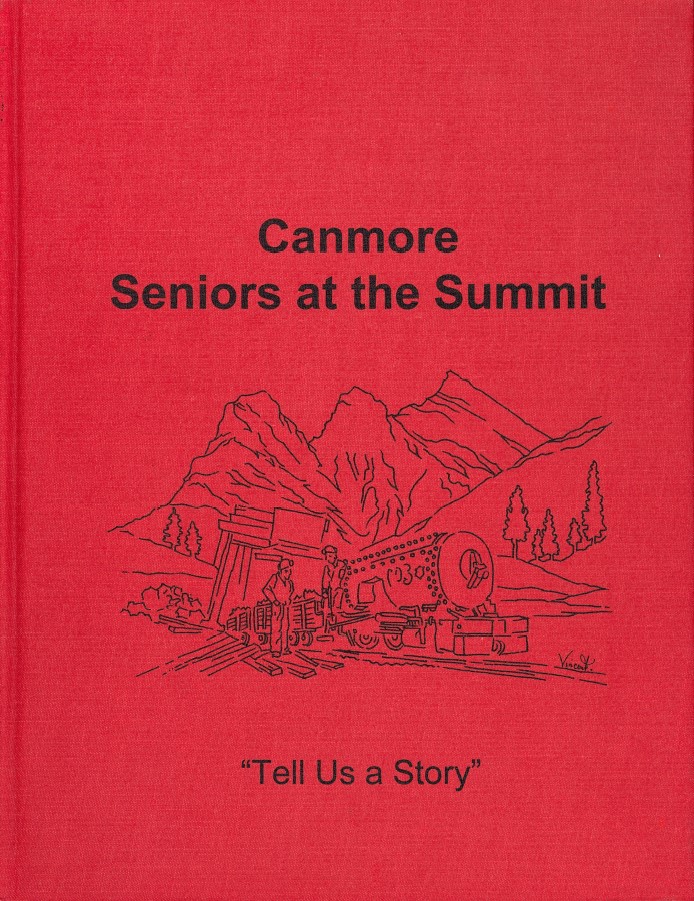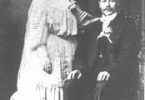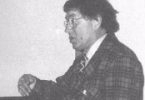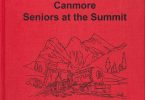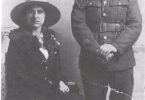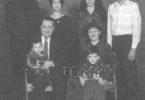My name is Emily Kennedy (nee Thompson), born October 14, 1909, in Crawcrook, Durham, England, thirteen miles south of Newcastle. My parents emigrated to Canada in 1911. My dad was a coal-miner with fireboss and pitboss papers. We spent four years in Coleman, where my dad was a pitboss. We moved to the Drumheller Valley in 1914, first to the Howland Mine, later North American Collieries, Nacmine, and then to Newcastles, (now part of the town of Drumheller.) I went to school there and later to Normal School. My first teaching position was at Midlandvale, now also a subdivision of Drumheller. In total, I taught school for 32.3 years, the last twelve years in Canmore.
My husband (deceased, 1992) was born at Bedlington, twelve miles north of Newcastle on Tyne, England. His family were also coal miners, but they settled in 1910 in Nova Scotia. There must have been a real need at that time for coal miners in Canada for many friends, on both sides, came here at the same time.
Bill and I met at a dance in Drumheller in 1925, and got married in 1933. We have three daughters, Patricia, Karen and Christine. They are all married and we have nine grandchildren.
In 1963 when the domestic coal mines in Drumheller closed down, one by one, Bill took a job as a fireboss, later pitboss at the Canmore Mines, where he worked until his retirement in 1969. We watched Canmore grow from a small mining town, population 1,901, (posted on the highway just outside of town,) to over 10,000, and city status.
The house we bought from Canmore Mines in 1965 was built in Georgetown in 1912. It was first in the Horseshoe (now Rundle Crescent) and moved to Hospital Hill (Three Sisters Drive) when we bought it. Through the mine we had water, sewers and very cheap electricity. At that time, Canmore town residents had their own well and septic tank (many with holes in the bottom so that they would never need emptying!) You would be amazed at how many town people were opposed to having “town” water and sewers installed.
When we settled in our house in 1964, Canmore had very few amenities. No banks. The Bank of Montreal in Banff sent a man down for half a day each Friday to cash cheques and do other banking. There were three small grocery stores – Cardo Marras, Roy Bray’s, and the Company Store. The latter was owned by the Canmore Mines who deducted the grocery bill from the miners’ pay cheques every two weeks. This store was noted for the excellence of its meat. People came from all around to buy.
There were two cafes – Leongs’ and the Chung King. A clothing store (Horbays’); a drug store; a one-doctor medical clinic and a small, but good hospital. The new nine hole golf course had just opened. Bill was president for a year. There was one school, now the Lawrence Grassi Middle School and consisted of two buildings – grades one to nine and grades ten to twelve. There were eighteen teachers, one principal and one vice-principal.
Ralph Connor United Church, St. Michael’s Anglican Church and the Catholic church were the old churches. A lot of our entertainment revolved around them, teas, suppers, bazaars. Everyone in town supported them.
In sports, skiing and snowboarding were not “in” yet, but softball was. There was a regular valley league of several teams, each sponsored by a merchant or an organization. They all had team uniforms, played on a weekly basis and had two to four tournaments a year. Hiking was always popular and we tried to do them all as outlined in “Ruthie’s” book on mountain hikes.
Yes, I have watched Canmore grow from small to big and applaud most of the changes, for change is inevitable. I do deplore the high prices of property and the minimum wages of some jobs, but all things have a way of levelling off supply and demand, you know!
In closing, I would like to relate a cute, but true story of the funeral of Charlie, the horse. In the days before mechanization, hauling coal from underground was done by mine ponies. They were stabled underground and only came out for two weeks a year when the mine shut for vacation. Charlie was the favorite among all the ponies. The “drivers” all loved him. One morning he was found dead, apparently of a heart attack. The “drivers” decided he had to have a proper funeral. One of them made himself a monk’s robe out of brattice cloth (like potato sacking!) with a rope tied for a belt. They dug a grave under the trees at the back of the mine property, brought Charlie out on a flat car and proceeded with the ceremony. There were prayers, a eulogy and hymns. Charlie was reverently laid to rest. “God rest in Peace good and faithful friend. “
In Canmore Seniors at the Summit, ed. Canmore Seniors Association, 2000, p.142-143.

